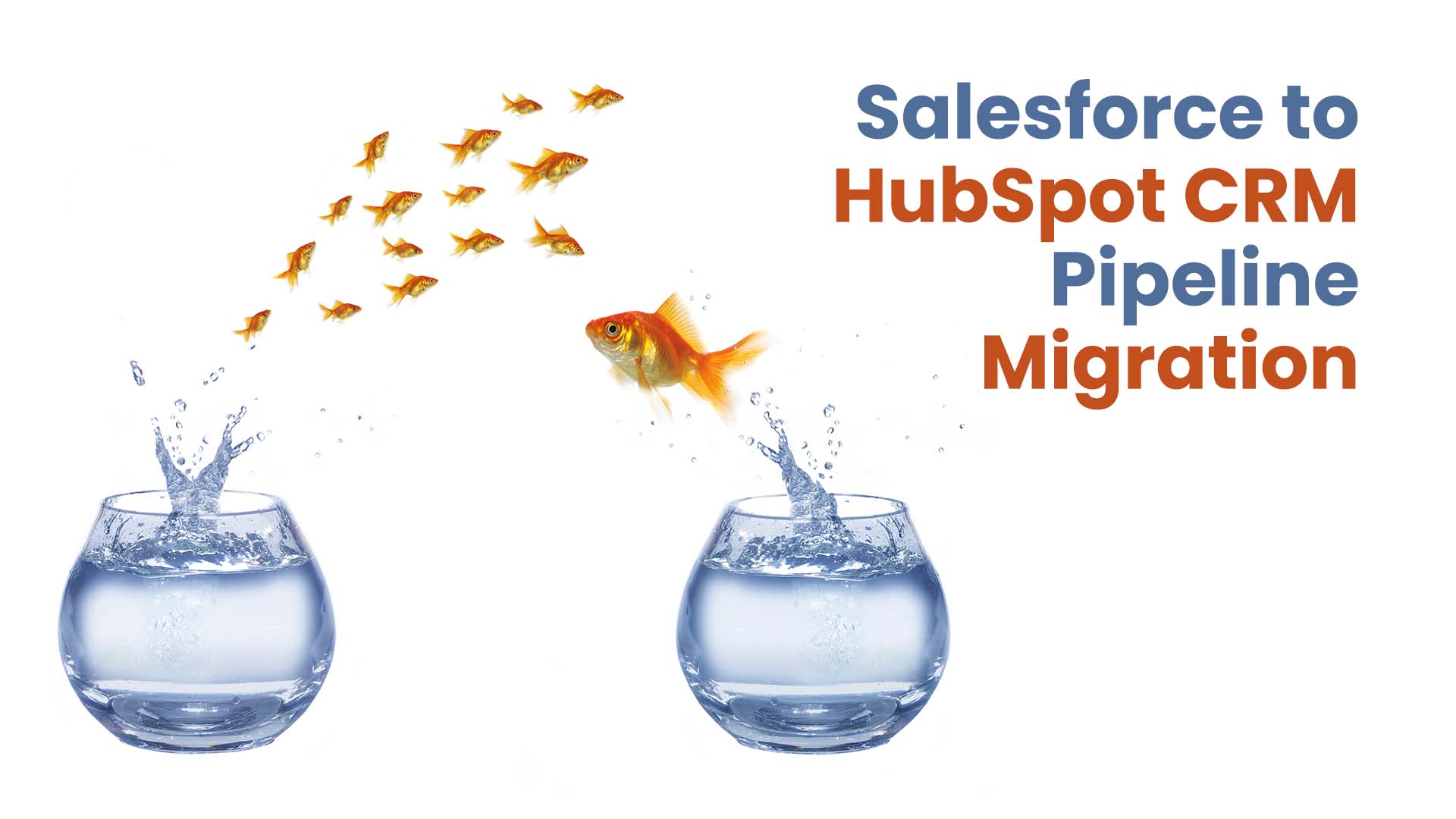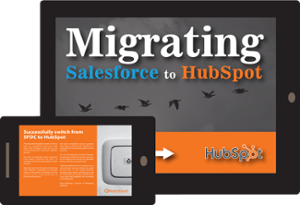As businesses grow and evolve, so do their needs for customer relationship management (CRM) tools. Salesforce has long been a popular option for managing customer data, but in recent years, many companies have made the switch to HubSpot CRM for its user-friendly interface, robust marketing automation capabilities, and cost-effectiveness. However, migrating from one CRM platform to another can be a daunting task. In this blog, we will explore the steps necessary to migrate your Salesforce pipeline to HubSpot CRM, ensuring a smooth transition and minimal disruption to your business operations.
Why choose HubSpot?
A major challenge with Salesforce is that it can be too complex, which is the primary reason why many businesses are considering migrating to HubSpot. While Salesforce's customisability gives it a powerful edge, it often comes at the cost of usability. Sales teams are typically burdened with additional administrative work to keep the CRM updated, and this can discourage them from adopting the software, limiting the insights and forecasting that the CRM can provide.
On the other hand, HubSpot was designed with the end-users, i.e., sales teams, in mind, as well as sales leaders. Its features are designed to reduce the time spent on admin and add value to a rep's day. This includes limited manual data entry and shorter click paths. Additionally, its Outlook and Gmail integration provides access to enablement tools within the email client. These advanced features, combined with the platform's powerful sales analytics and reporting functions, make for a CRM that is easy and pleasant to use for both sales reps and their leaders.
If you're experiencing challenges with Salesforce's complexity and administrative overhead, and you want a CRM platform that's designed to work for you and your sales team, then HubSpot is worth considering.
Many SaaS solutions sacrifice power for ease of use, but HubSpot offers both. The platform's ease of use is not at the expense of functionality, as is often the case. HubSpot offers a powerful solution that allows you to customise your data structures with Custom Objects. This feature gives you the flexibility to define objects as your business data requires, beyond the standard objects available in HubSpot such as contacts, companies, deals, tickets, and products.
Unlike Salesforce and other SaaS solutions that expand their product offerings through buying and integrating other solutions, HubSpot has developed all of its solutions in-house. This approach results in a more cohesive platform, offering the same level of experience and ease of use across all areas of the software. In contrast, when different solutions are bought and integrated, it can lead to a Frankenstein-like software experience that is disjointed and difficult to use.
In conclusion, while Salesforce has been the industry leader in CRM for over 20 years, its complexity and limited ease of use have led many to seek alternatives. HubSpot, with its user-friendly design, advanced analytics, and customisability, has emerged as a strong competitor. By developing all their solutions in-house, HubSpot offers a seamless interface throughout the platform and allows for the flexibility of Custom Objects to tailor the software to your specific business needs. If you're considering migrating from Salesforce or other CRM systems, HubSpot's features and ease-of-use make it a strong contender to consider.
READ Understanding HubSpot Data Migration
How to Migrate from Salesforce to HubSpot successfully
1. Evaluate your current Salesforce data:
Before starting the migration process, it's essential to understand your current data structure in Salesforce. Take the time to identify the data you need to transfer and determine what you can leave behind. Identify any custom fields, reports, and workflows that you'll need to recreate in HubSpot.
2. Plan your migration:
Plan out your migration process, including the timeline, budget, and resources required. Ensure that all stakeholders are on the same page and understand the impact of the migration.
3. Set up HubSpot:
Once you've decided to move forward with the migration, you'll need to set up your HubSpot account. Import your existing data into HubSpot, including contacts, leads, accounts, opportunities, and custom objects.
4. Create custom fields and workflows:
HubSpot allows you to customise your fields and workflows to fit your business needs. Use this opportunity to recreate any custom fields and workflows that were set up in Salesforce.
5. Train your team:
Once you've set up your HubSpot account and recreated your custom fields and workflows, train your team on how to use the new system. This training should include how to navigate HubSpot, how to enter data, and how to use the features and functionality.
6. Test and refine:
Before fully transitioning to HubSpot, test the new system to ensure that everything is working as expected. Refine any workflows or custom fields as needed to ensure a smooth transition.
7. Go live:
Once you're confident that the migration is complete, and your team is trained, it's time to go live with HubSpot. Plan for any necessary downtime and ensure that your team is ready for the transition.
Regardless of these advantages, you'd be forgiven for being anxious about taking the leap. A CRM migration is a significant and disruptive process, however follow these steps, and you and your team will be moving over from Salesforce to HubSpot, smoothly and pain-free.
Last but not least,
To ensure a successful migration from your previous system to HubSpot CRM, it's crucial to consider a few additional factors beyond the steps outlined. First and foremost, you should only import the data that you want to keep going forward into HubSpot. This data should be clean and de-duplicated to maintain the quality of your new system. Remember, your new system is only as good as the data in it. Therefore, it's essential to evaluate your current data and decide which information should be imported to HubSpot to avoid cluttering your new system.
Moreover, it's crucial to ensure that your team understands why you are migrating to HubSpot and sees the benefits of the migration. Your team should have a buy-in on the migration process to support the transition to the new system. Make sure you communicate with your team and educate them on how HubSpot can help streamline and optimise their workflows, saving time and improving efficiency.
Integrations are another important factor to consider during migration. HubSpot's central source of truth for customer data is one of its most significant values, making it crucial to use systems that integrate with HubSpot. When you integrate your email tool with HubSpot, you can log your emails to customers directly into your CRM, providing insights for everyone working on the account. This integration will help you keep track of all customer interactions, allowing your team to deliver better service and support.
When building custom objects, it's essential to know when to use custom objects and custom properties. HubSpot can simplify this process by recommending standard objects to match the fields you're trying to program. If it recommends a standard object and it fits your needs, it's best to stick with the standards. This will help ensure that your new system is structured efficiently and avoids confusion or complications.
We believe that HubSpot offers the perfect solutions for your business, and we're here to assist you with a seamless migration to the HubSpot CRM platform. At Real Inbound, we're committed to being with you every step of the way, providing expert guidance and support to ensure that your migration process is as smooth and successful as possible. So if you're looking to make the move to HubSpot, don't hesitate to contact us for assistance.




